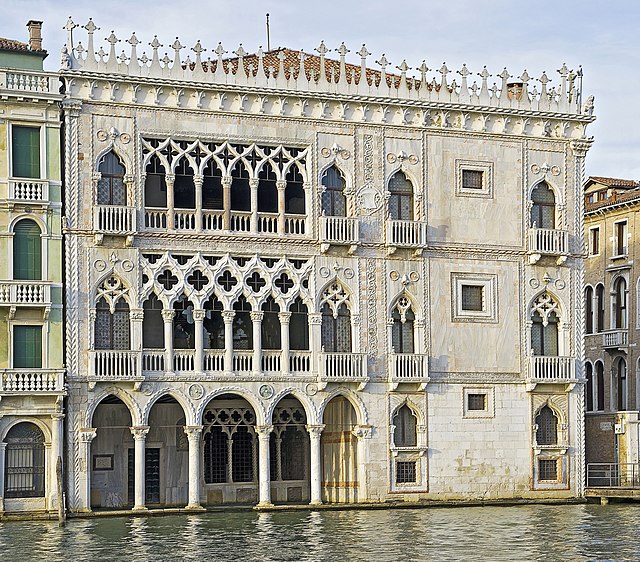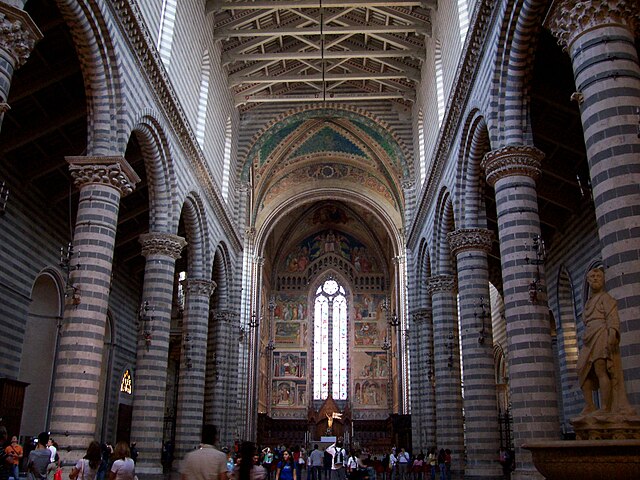Venetian Gothic architecture
Venetian Gothic is the particular form of Italian Gothic architecture typical of Venice, originating in local building requirements, with some influence from Byzantine architecture, and some from Islamic architecture, reflecting Venice's trading network. Very unusually for medieval architecture, the style is at its most characteristic in secular buildings, with the great majority of surviving examples of the style being secular.
Gothic arches adorn the Doge's Palace, Venice. Mostly 14th century.
Ca' d'Oro on the Grand Canal, 1428–30.
Palazzo Pesaro Orfei, 15th century.
The Palazzo Cavalli-Franchetti on the Grand Canal; the 15th-century window style of the facade was extended to the sides in the 19th century.
Italian Gothic architecture
Gothic architecture appeared in the prosperous independent city-states of Italy in the 12th century, at the same time as it appeared in Northern Europe. In fact, unlike in other regions of Europe, it did not replace Romanesque architecture, and Italian architects were not very influenced by it. However, each city developed its own particular variations of the style.
Image: Duomo di siena, facciata 01
Image: Interno duomo Orvieto
Image: Milan Cathedral from Piazza del Duomo
The Cistercian Fossanova Abbey (founded 1208)








